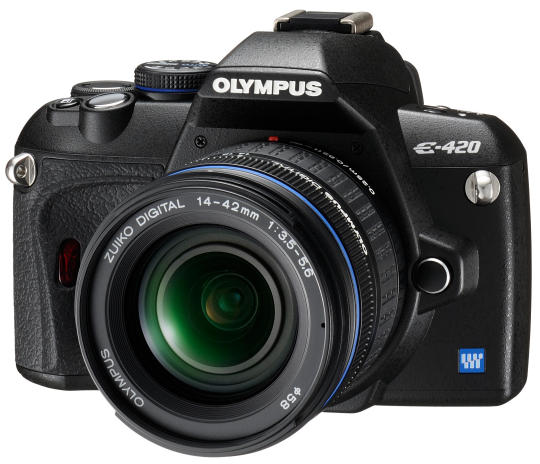Olympus announces E-420, the most compact DSLR to date


The E-420 is a relatively minor update to the E-410, and has a similarly dated look (which, I have to admit, I kind of like with its leather-look grip--but that could be because I grew up in the '80s). New features include a bigger and better 2.7-inch LCD, Auto-focus in Live View mode, wireless flash capability, and new face-detection technology and Shadow Adjustment technology. Olympus also says it has improved white-balance algorithms and bumped up continuous shooting speed up to 3.5 frames per second. A nice touch is the Perfect Shot Preview (which lets you preview special effects onscreen so you can see what the image will look like before you shoot). Perfect Shot takes good advantage of the Live View mode that most new DSLRs now include, which Olympus pioneered back in 2006 with its E-volt E-330. Some Live View trivia: the original Live View mode in the E-330 used dual sensors rather than the more-prevalent and more-clunky solution of flipping the mirror up and down (which the E-420 uses), though David Pogue seems to think Sony invented this.